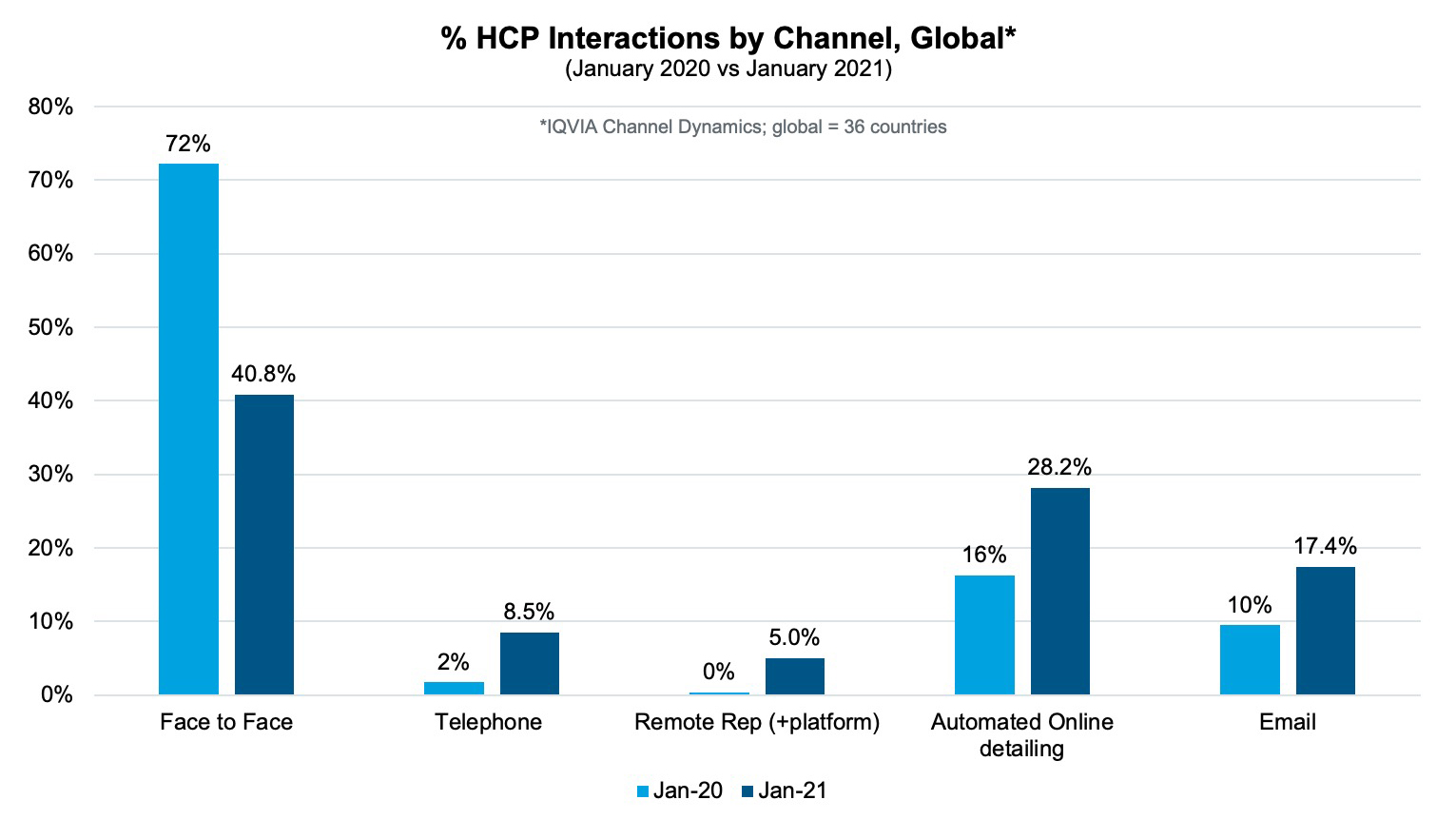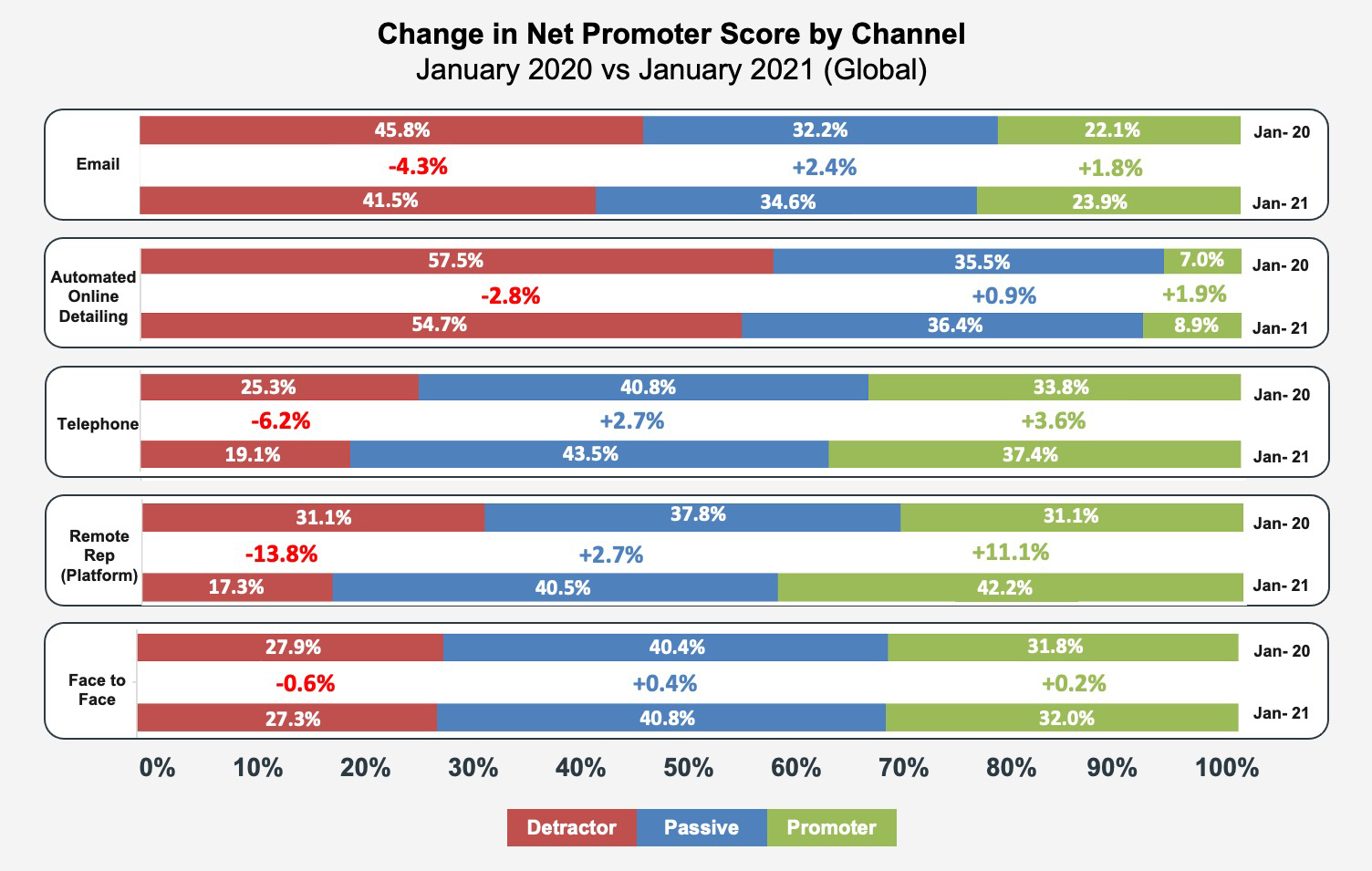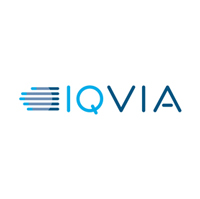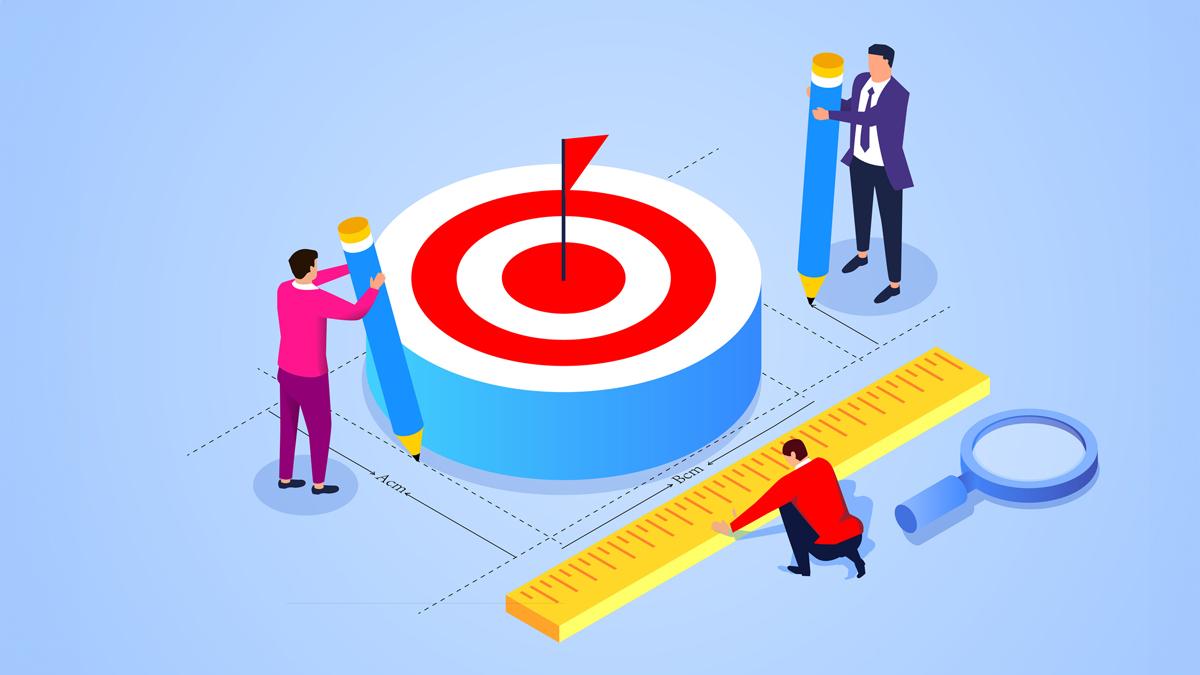Designing HCP engagement for the next normal

Life sciences companies’ engagement with HCPs has changed significantly in the past 12 months, as the COVID-19 pandemic struck. Restrictions to in-person face-to-face interactions have resulted in increased use of remote and digital channels. Many life sciences companies have begun 2021 by reviewing how they respond to the longer-term impact of this change, and its impact on field teams is a major topic.
In the following, we summarise the situation one year on from the pandemic with updated quantitative data, and qualitative research with physicians in Europe, to bring the all-important ‘voice of the customer’ to the debate around ‘what next?’
Where are we now?
The landscape for healthcare professional (HCP) engagement has changed dramatically over the past 12 months, with restrictions to in-person face-to-face meetings resulting in increased use of remote and digital channels. The channel mix and relative change has varied by country and the local impact of pandemic waves, including lockdowns and pressures on health systems.

The same situation has also increased HCPs’ acceptance of alternative channels, with life sciences companies more widely embracing them and responding accordingly.
Many life sciences companies have begun 2021 by reviewing how they respond to the longer-term impact of this change – and its impact on sales forces is a major topic. Commercial model reshaping (41% of respondents) and readiness of customer facing teams (34% of respondents) were key challenges identified by life science companies in an IQVIA survey in October 2020. Sales force adoption (48% of respondents) was deemed a key success factor for omnichannel engagement with HCPs in the ‘next normal’ (IQVIA survey, March 2021).
Analysis of Net Promoter Score in IQVIA’s ChannelDynamics data presents some interesting findings. There is an improvement in HCPs’ views of remote representative platform interactions with an important increase in promoters and decrease in detractors over the past 12 months. Smaller positive changes in HCPs’ views are observed for telephone, email and automated online detailing and minimal positive change for traditional face-to-face interactions.

So, whilst we have seen a shift in the mix of channels used to engage HCPs, how much has their perception of these channels changed? And more importantly, how could and should this shape emergent commercial models?
The HCP View
To supplement many quantitative analyses, IQVIA conducted independent market research to gain HCPs’ views in more detail (Q4, 2020). The research involved in-depth interviews with primary and specialist physicians in Germany, Italy, Spain and the UK who were used to some level of interaction with life sciences companies pre-pandemic1.
As expected, HCPs’ reported contact from life sciences companies reduced or ceased during the first wave of the pandemic; many said they missed meetings with representatives. After the first lockdowns, HCPs saw an increase in contact, with a clear shift to remote or online engagement mainly by email, phone and video calls. A level of face-to-face meetings returned in some markets, albeit significantly below pre-COVID levels.
Higher use of remote engagement and digital channels was positively valued by HCPs
“I’ve got a lot more out of my interactions with the industry in the past six months than I’ve had before. Virtual interaction has been much more beneficial.”
Specialist physician, UK
“We are able to communicate outside of normal working hours. That makes the relationship with the company more flexible, versatile, easier.”
Specialist physician, Italy
When asked about future expectations, HCPs said that increased remote engagement will be lasting and should continue being used to supplement face to face contact, as with digital interactions such as email.
IQVIA’s experience in delivering remote detailing affirms that HCPs like remote engagement. A review of HCP satisfaction (measured via post remote call feedback survey) for the past 2 years shows that 96% of HCPs are highly satisfied or satisfied with remote interaction and 93% are highly likely or likely to repeat the experience in the future. However, according to HCPs who participated in our qualitative research, and are used to regular meetings with representatives, face to face meetings remain essential to build and maintain trust with industry representatives.
“I would very much like personal contact to be maintained… .it’s simply at a different level for me. It establishes a trusting relationship. The detail can be sent out on the internet, through seminars and presentations, all via electronic media.”
Specialist physician, Germany
“I think the [virtual meetings] changes are here to stay. This interaction will remain in the long term, even after the pandemic is over.”
Primary physician, Spain
A further relevant point of note from our physician interviews was the important role that life sciences companies play in continuing education and facilitating networking with peers. Access to and experience with educational webinars during the pandemic has been positive – physicians were keen to continue with this, as well as have access to local in-person events at a safe, appropriate time.
The need for appropriate content was also highlighted in physician interviews, where they reported high interest in information relevant to their clinical practice, such as patient support materials, data on existing and new products, clinical trial results and COVID-19.
So, what should life science companies change for the ‘next normal’?
Now more than ever, there is an urgent need for the industry to reshape their commercial models and transform customer facing teams.
We have clear expectations from HCPs on how they want the industry to interact with them and it supports a further shift from traditional product centric and face-to-face focused engagement to a more flexible, omnichannel customer centric and personalised model.
“In the future, there will be fewer face to face meetings and more remote meetings. In a way, COVID has accelerated a process which was happening anyway.”
Primary physician, UK
To add to the relevance of this point, not only are HCPs expecting them, but we know that they work. In fact, as IQVIA’s ChannelDynamics shows, the impact of remote detailing on HCPs reported prescribing intent increased in 2020 vs. 2019 in six out of seven most developed markets. In addition, in 2020 the impact on intention to prescribe was similar or outperformed face-to-face detailing in five of seven most developed markets.
It’s clear that HCPs still value and want person-based interactions, and there appears to be industry consensus that face-to-face engagement will continue to play a key role. The future is not just about a shift to digital, but how to effectively combine digital with evolving person-based interactions.
Effectively evolving and developing the representative role will be a key requirement moving forwards. Customer-facing teams must be able to deliver face-to-face interactions and quality remote interactions, as well as embrace digital approaches as routine. Technology will facilitate this, and better use of more data will inform actions. In due course, artificial intelligence will drive more ‘on demand’ support for HCPs.
Meantime, adaptation and upskilling of customer-facing teams will be an essential first step, creating more flexible and so-called ‘hybrid’ roles. This is not just about one-off initial training sessions, but requires relevant ongoing coaching, incentivisation, development and evolution.
At the same time, life sciences companies will need to evolve and improve their use of content – it’s not just about how and when they engage, but about ensuring meaningful interactions for time-pressured HCPs.
The pandemic has accelerated a transformation process the life sciences industry was already, albeit slowly, embracing – but the changes seen over the past 12 months are here to stay.
Life sciences companies have no choice but to listen to their customers and change – or risk becoming irrelevant.
Notes
Data cited in this article is drawn from IQVIA’s proprietary data assets and previous thought leadership publications.
For the purpose of this article, remote interaction or engagement largely refers to company representatives sharing content via an online meeting environment; for sales purposes, this approach is also known as remote, video or live detailing
- Pre-pandemic, physicians would typically have 5 or more interactions with industry representatives per month.
About the authors
 Liz Murray is global lead, HCP Engagement Centre of Excellence, Contract Sales & Medical Solutions, at IQVIA. Liz is a specialist in HCP engagement, and has significant expertise in new channels and remote interactions. Prior to joining IQVIA, she worked at Pfizer for 13 years in sales, marketing, account management, market access, customer strategy, business effectiveness. Before that, Liz worked in the UK’s National Health Service (NHS) for 15 years as a senior manager and as a clinical physiotherapist
Liz Murray is global lead, HCP Engagement Centre of Excellence, Contract Sales & Medical Solutions, at IQVIA. Liz is a specialist in HCP engagement, and has significant expertise in new channels and remote interactions. Prior to joining IQVIA, she worked at Pfizer for 13 years in sales, marketing, account management, market access, customer strategy, business effectiveness. Before that, Liz worked in the UK’s National Health Service (NHS) for 15 years as a senior manager and as a clinical physiotherapist
 Karen Ticozzi is director offering development, people & skills at IQVIA. Karen joined IQVIA in March 2014, after having gained more than 20 years of experience in the healthcare industry mainly in pharma marketing and digital. Recently she transitioned to the Personal & Digital HCP Engagement Centre of Excellence where she is responsible in developing capabilities to effectively deliver remote and hybrid engagement with HCPs and in supporting Life Science Companies in the required upskilling and transformation process of their customer facing teams.
Karen Ticozzi is director offering development, people & skills at IQVIA. Karen joined IQVIA in March 2014, after having gained more than 20 years of experience in the healthcare industry mainly in pharma marketing and digital. Recently she transitioned to the Personal & Digital HCP Engagement Centre of Excellence where she is responsible in developing capabilities to effectively deliver remote and hybrid engagement with HCPs and in supporting Life Science Companies in the required upskilling and transformation process of their customer facing teams.











